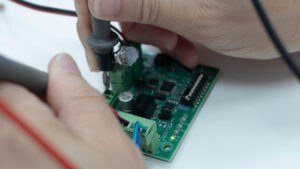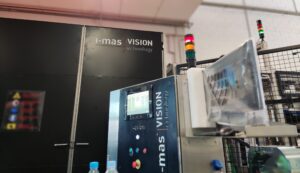In the industrial automation landscape, collaborative robots, commonly known as cobots, are making a significant difference. Unlike traditional industrial robots, which are designed to work in isolation from humans, cobots are created to operate safely and efficiently alongside them. Their versatility, accessibility and ability to perform tasks with pinpoint accuracy have made them an essential element in modern production lines.
In this article we will explore their main benefits in industry, their impact on the safety and accuracy of production processes, and their role as drivers of the industry of the future.
What are cobots and how do they benefit the industry?
Cobots are robots designed to interact directly with humans in a shared environment, eliminating the need for physical safety barriers. Equipped with advanced sensors, artificial intelligence systems and adaptive control algorithms, these robots are not only safe, but also incredibly flexible and easy to program.
Among the benefits they offer, the following stand out:
- Versatility: Cobots can be adapted to a variety of tasks, from small component assembly to heavy material handling.
- Ease of use: Intuitive programming allows operators to set them up quickly, reducing implementation times.
- Affordable cost: They represent a more affordable investment compared to traditional industrial robots, making automation accessible even to small and medium-sized companies.
- Affordable cost: They represent a more affordable investment compared to traditional industrial robots, making automation accessible even to small and medium-sized companies.
The impact on production line safety and accuracy
One of the major contributions of cobots is their safety-focused design. Thanks to proximity sensors and technologies such as 3D mapping, cobots can detect human presence and adjust their speed or stop if necessary. This eliminates the risk of collisions or accidents, ensuring a safe working environment.
International standards, such as ISO/TS 15066, set clear parameters for human-robot interaction, ensuring that cobots operate safely even in complex tasks or confined spaces.
In addition to safety, collaborative robots are extremely precise tools. Equipped with machine vision and advanced control systems, they can perform repetitive tasks with an accuracy that surpasses human capabilities. This is especially valuable in processes where consistency and quality are critical, such as product inspection, electronics assembly or material batching.
Cobots as drivers of smart industry
Cobots are destined to play an increasingly important role in the evolution of industry. With the advancement of technologies such as the Internet of Things (IoT), artificial intelligence and 5G connectivity, cobots will be further integrated into smart factory ecosystems, where automation and human-robot collaboration will be the norm.
In the future, cobots are expected to become even more autonomous, able to learn and adapt to new tasks quickly and efficiently. Their ability to work in harmony with humans will not only increase productivity, but also enable more sustainable and safer working environments.
In short, we can say that collaborative robots represent a paradigm shift in industry. Their ability to combine safety, precision and flexibility makes them essential tools for companies seeking to remain competitive in an ever-changing global market. Adopting cobots not only improves operational efficiency, but also drives innovation and sustainability in production processes. In this context, cobots are not just a technological solution; they are the key to building the industry of the future.
In the engineering department of i-mas we are specialized in the combination of artificial vision technologies, deep learning and industrial automation in production processes, which allows us to offer integral solutions adapted to the specific needs of each client.
Want to learn more about our services? Contact us or visit our projects section!



